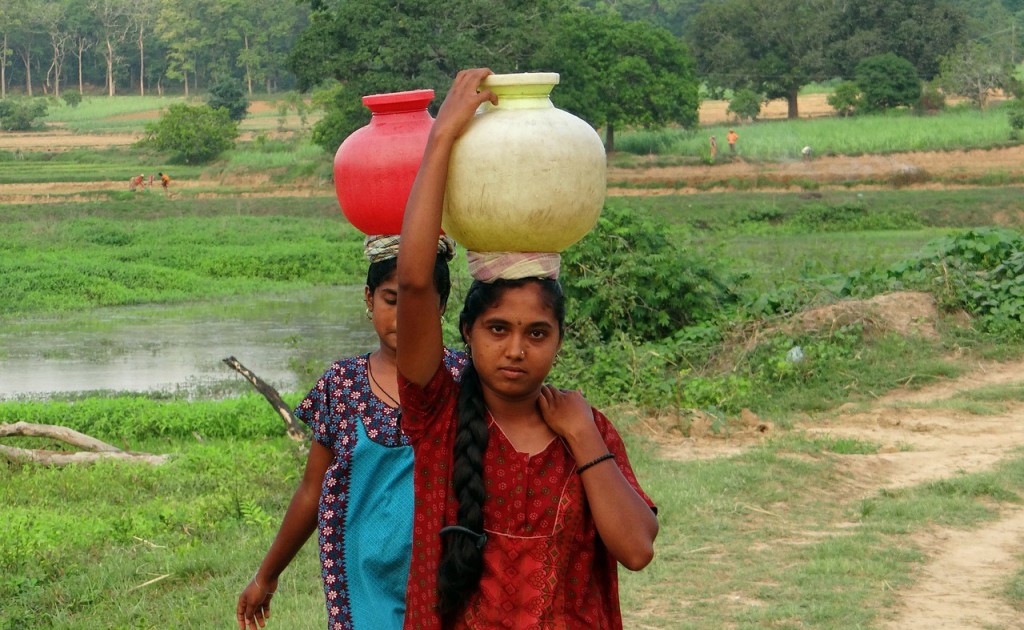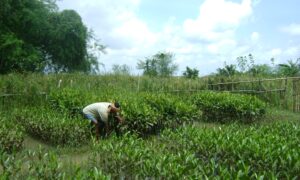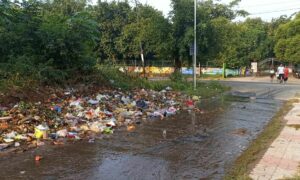The tribal women walk the longest for water!

Almost one-third of tribal families, that means mostly the women, have to walk up to a river or a spring, a river, a pond, a lake or an open well to fetch drinking water. This journey can range between a few hundred meters to more than five kilometres. Compare this with women of all social groups of the country and you will find the tribal women to be doubly vulnerable than others.
 As the summer sets in much before its scheduled arrival this year, pictures of women carrying drinking water in containers of various shapes and sizes and walking long stretches have started emerging from across the country.
As the summer sets in much before its scheduled arrival this year, pictures of women carrying drinking water in containers of various shapes and sizes and walking long stretches have started emerging from across the country.
Women, who bear the prime responsibility of fetching drinking water for their families, have always taken those arduous journeys in India.
However, it is disproportionately burdensome for the women belonging to the poor families, those living in urban slums and rural areas.
Beyond this larger picture, where one could easily generalise the problems faced by women, some details are often missed out by the media and policy makers alike.
Among the women, those from the various socially excluded groups such as the Scheduled Tribes, Dalits and others face more hardship than others.
On this International Women’s Day, let me – through a statistical analysis – try to picture problems centering drinking water for the tribal women of India.
According to 2011 Census figures, India has 104.3 million tribals, which is 8.6 percent of the total population. Almost 90 percent of them live in rural areas and 10 percent in urban areas.
More than two third of tribals stay in seven states including Madhya Pradesh, Maharashtra, Odisha, Gujarat, Rajasthan, Jharkhand and Chhattisgarh.
The tribals, with 990 females for 1000 males, have a very good sex ratio compared to the national average of 940.
Socially, the tribal women do enjoy a better status in their communities in most parts of India.
However, governments have failed them on several counts. Almost one-third of tribal families, that means mostly the women, have to walk up to a river or a spring, a river, a pond, a lake or an open well to fetch drinking water.
This journey can range between a few hundred meters to more than five kilometres. Compare this with women of all social groups of the country and you will find the tribal women to be doubly vulnerable than others.
Another 50 percent of tribal women have to travel out of their homes, even if to nearby sources such as tube wells or tap posts or open wells, to carry home drinking water for the family members.
Only 19.7 percent of tribal families have the provision of tap water within their premises, as compared to 46.6 percent for all other social groups.
When it comes to treated water, however, more than a half of this comes without any sort of treatment. That means, only about 10 percent of tribal women receive treated drinking water in this country.
In other words, the state’s responsibility for providing drinking water has so far been restricted to only 10 percent of the tribal communities. Providing untreated water cannot be considered as provision of drinking water.
Migration to urban areas does not necessarily improve conditions of the traditionally neglected communities such as the tribals. The access to drinking water provisions proves that well.
Statistically, drinking water provision is much better in urban India than in rural India. However, for the tribal communities, the backwardness remains even there.
Almost about 16 percent of tribal women – almost double of other social groups – have to walk far off places even in urban areas to fetch drinking water for their families. Another 30 percent tribal women have to get drinking water in nearby sources.
Only about 55 percent of the Scheduled Tribe families have drinking water provisions within their premises in urban areas, as compared to about 71 percent of other groups.
It is claimed that India has already achieved the Millennium Development Goal (MDG) water target, but these statistics certainly show otherwise. And remember, these are only statistics. The reality is harsher for sure.
India’s tribal women and women of other socially excluded groups certainly need a much better treatment if India wishes to follow a path of equitable growth.
(Ranjan Panda is an Indian environmentalist, water and climate change expert)












































